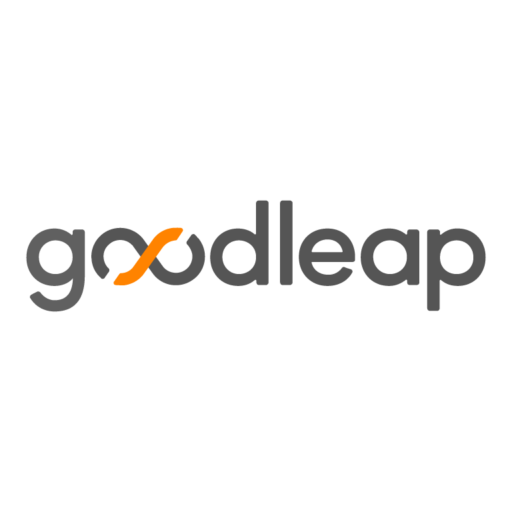
Gleap: Complete Buyer's Guide
All-in-one customer feedback and support platform
Gleap positions itself as an all-in-one customer feedback and support platform that combines visual bug reporting, AI-powered chat support, and comprehensive feedback management in a single integrated solution. Gleap has evolved from a specialized bug reporting tool launched in 2020 to a comprehensive AI-driven customer support platform by 2023, now serving over 4,100+ customers across diverse industries[38][41][48].
Market Position & Maturity
Market Standing
Gleap occupies a middle-market position in the customer feedback and support platform landscape, positioning itself as more comprehensive than simple bug reporting tools but less specialized than dedicated ecommerce support platforms[41][44].
Company Maturity
Company maturity indicators include established enterprise customer relationships with organizations like Tridonic and Commonplace[55][56], suggesting operational stability and proven deployment capabilities.
Growth Trajectory
The company has demonstrated consistent growth trajectory from its 2020 launch as a bug reporting tool to a comprehensive AI-driven platform serving over 4,100+ customers by 2023[38][41][48].
Industry Recognition
Industry recognition remains limited in available research, with customer testimonials and case studies providing primary validation rather than third-party analyst recognition or industry awards.
Longevity Assessment
Longevity assessment appears positive based on consistent customer growth, product evolution, and enterprise customer retention, though the company's relative youth (founded 2020) means long-term market presence remains to be proven compared to established competitors with decade-plus market presence.
Proof of Capabilities
Customer Evidence
Customer Evidence demonstrates Gleap's effectiveness across diverse implementation scenarios. Commonplace achieved significant operational improvements, with AI automation handling 50-60% of support inquiries and 90% of tickets resolved in two replies or fewer[56].
Quantified Outcomes
Quantified Outcomes from available customer evidence show measurable business impact. The 50% reduction in support volume reported by Commonplace[56] represents significant operational efficiency gains.
Case Study Analysis
Tridonic successfully implemented Gleap to achieve centralized customer communication and improved operational efficiency[55], demonstrating the platform's capability to serve complex organizational structures.
Market Validation
Market Validation comes through the platform's growth to 4,100+ customers[38][41][48] across diverse industries, suggesting successful adoption patterns beyond individual case studies.
Competitive Wins
Competitive Wins are evidenced through customer testimonials mentioning responsive support experiences and cost advantages over established alternatives[38][48].
Reference Customers
Reference Customers include publicly disclosed implementations at Tridonic and Commonplace[55][56], providing verifiable examples of successful enterprise deployments.
AI Technology
Gleap's technical foundation centers on OpenAI's GPT integration across multiple support functions, including conversation summarization, automated reply generation, text expansion, and comprehensive feedback analysis[39][50].
Architecture
The platform's architecture combines visual bug reporting with AI-powered support in a unified system that processes both textual feedback and visual documentation simultaneously[41][44].
Primary Competitors
Primary Competitors include established players like Intercom for AI-powered chat capabilities, specialized ecommerce solutions like Gorgias for industry-specific features, and point solutions like Instabug for bug reporting functionality[41][44].
Competitive Advantages
Competitive Advantages center on platform consolidation—combining visual bug reporting, AI chat, feedback management, and analytics in a single solution[41][44].
Market Positioning
Market Positioning occupies a middle-market position—more comprehensive than simple bug reporting tools but less specialized than dedicated ecommerce support platforms[41][44].
Win/Loss Scenarios
Win/Loss Scenarios favor Gleap when organizations prioritize platform consolidation over best-in-class individual features, when visual bug reporting capabilities provide meaningful operational benefits, and when budget constraints favor integrated solutions over specialized point tools[41][44].
Key Features

Pros & Cons
Use Cases
Integrations
Pricing
Featured In Articles
Comprehensive analysis of Customer Feedback for Ecommerce for Ecommerce businesses and online retailers. Expert evaluation of features, pricing, and implementation.
How We Researched This Guide
About This Guide: This comprehensive analysis is based on extensive competitive intelligence and real-world implementation data from leading AI vendors. StayModern updates this guide quarterly to reflect market developments and vendor performance changes.
56+ verified sources per analysis including official documentation, customer reviews, analyst reports, and industry publications.
- • Vendor documentation & whitepapers
- • Customer testimonials & case studies
- • Third-party analyst assessments
- • Industry benchmarking reports
Standardized assessment framework across 8 key dimensions for objective comparison.
- • Technology capabilities & architecture
- • Market position & customer evidence
- • Implementation experience & support
- • Pricing value & competitive position
Research is refreshed every 90 days to capture market changes and new vendor capabilities.
- • New product releases & features
- • Market positioning changes
- • Customer feedback integration
- • Competitive landscape shifts
Every claim is source-linked with direct citations to original materials for verification.
- • Clickable citation links
- • Original source attribution
- • Date stamps for currency
- • Quality score validation
Analysis follows systematic research protocols with consistent evaluation frameworks.
- • Standardized assessment criteria
- • Multi-source verification process
- • Consistent evaluation methodology
- • Quality assurance protocols
Buyer-focused analysis with transparent methodology and factual accuracy commitment.
- • Objective comparative analysis
- • Transparent research methodology
- • Factual accuracy commitment
- • Continuous quality improvement
Quality Commitment: If you find any inaccuracies in our analysis on this page, please contact us at research@staymodern.ai. We're committed to maintaining the highest standards of research integrity and will investigate and correct any issues promptly.